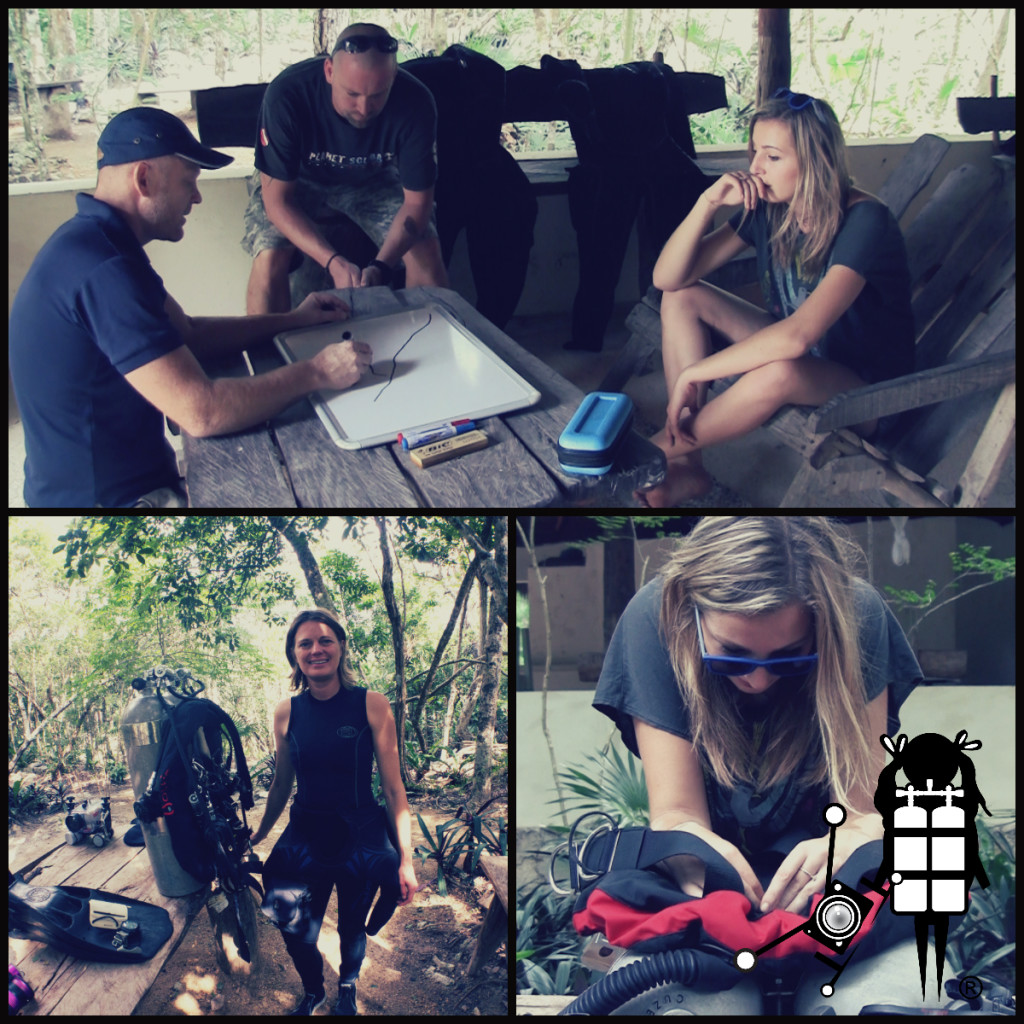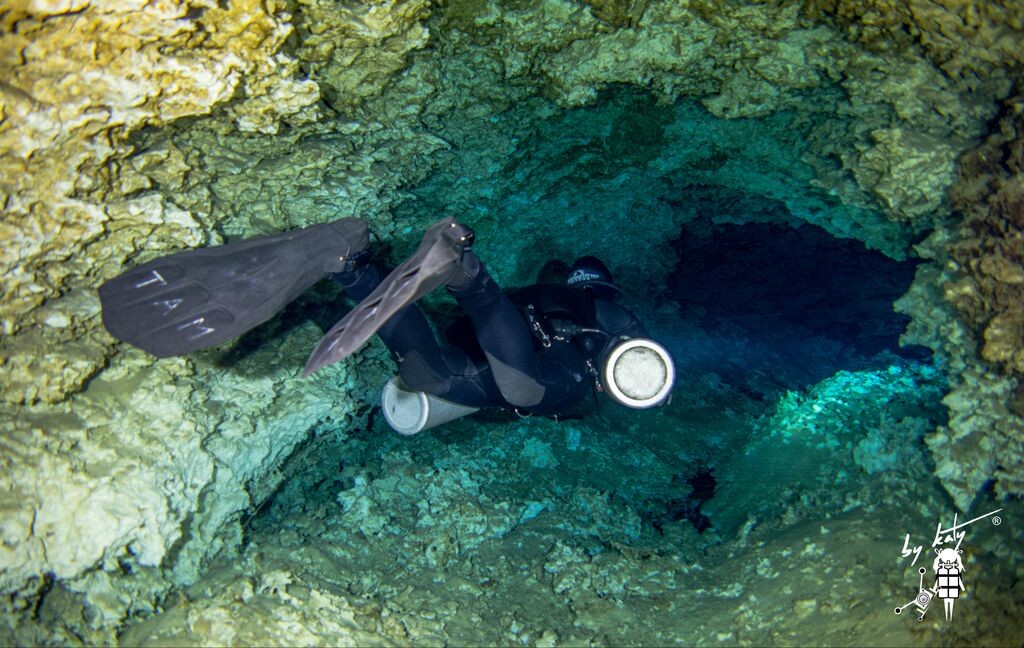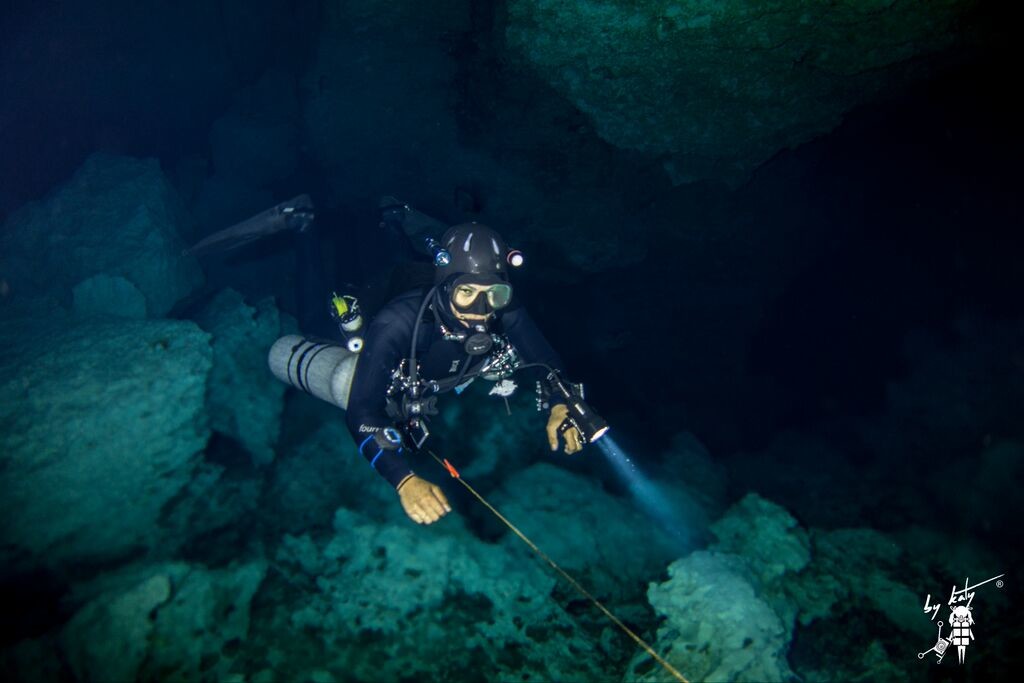By Katy Fraser
Upon completion of my full-cave course with Sirius Diving, Marielle Harrison, my instructor Kris’ wife, joined us to film our final dive. I found it quite useful to listen to her dive plan and watch her technique, noting especially the importance of not getting between the diver and the line when filming, as in a no-visibility event this would mean that the diver would have no direct access to the line to exit the cave. Marielle also had her own buddy on the dive since she couldn’t make jumps with a camera in her hands. Running a jump line parallel to ours definitely made for better shots, as opposed to those she would have gotten if following the group.
It’s been four months since I completed the full-cave course, and I’ve spent the time since diving a lot and assisting on other cave courses in order to get a well-rounded view of other instructors’ teaching methods. There are quite a few differences in terms of how a full-cave course is taught in Mexico, including how to communicate in the cave, navigational markers, which navigational markers to lay and also exit procedures. No particular way is necessarily better than another; all methods are safe and have been explained to me in depth by each instructor. It’s all about what methods are most comfortable for you. Observing these other teaching methods has given me a great overview of how the course is taught, and allows me to apply the methods I like to my own diving, and also to justify why I do so.
A very good friend who’s also a technical instructor and fully cave qualified joined me in Mexico last September. We dive together quite comfortably and make an excellent team. It’s important to keep the dive as clean and simple as possible, and when you’re diving with somebody you know well and fully trust, planning is very straightforward. Diving with a friend has also allowed me to gain some independence from cave guides and instructors. I was quite nervous at first, as it’s easy to feel alone in a cave without an instructor or experienced cave diver as a guide. It took some time to feel completely at ease and build solid confidence in my own training and diving capabilities.
I began to film during some cave courses, which put a comfortable limiting factor on my dives since you’re initially restricted to the rule of sixths on gas, and also by the new cave divers’ air consumption, which is usually quite high until they become used to the environment. This allowed me to get some great shots of skills for the cave video I’m currently producing, and also to build up my skills, confidence and awareness while diving with my camera in a full-cave environment. One of the most important things I learned is the importance of respecting the cave rules when diving with a camera — these rules should never be broken to obtain a great shot. These dives also allowed me to practice getting nice shots of divers from the front with out being either deeper in the cave or breaking team formation. The best way I’ve found so far is to dive in at least two teams of two. By doing so, I’ve got someone who can make the jumps I need to be ahead or parallel to the team I want to film. This is also much safer than diving in a solid, large group because communication is stronger across smaller teams, and all exit markers and jumps leading to the exit have been confined essentially twice, as everyone is diving the same dive. My friend Tamara has been up my constant buddy, and so we’ve become quite efficient when it comes to planning dives with the camera.
We initially started filming by completing simple cave circuits that I’m familiar with, again in two teams of two, with minimal jumps that could be laid on the first dive in order to complete the circuit on the second. We didn’t take the camera on the first dive, instead laying out the necessary jumps to set up the circuit. When we reached our thirds on gas we would lay a cookie to mark the point. On the second dive we began at the other end of the circuit, and if we reached the cookie we laid on the first dive before our thirds, we knew we could carry on to complete the circuit safely well within our gas allowances, without turning back the way we came. This method allowed us to film by completing a loop as opposed to diving on a normal line, wherein you would essentially film the dive twice — once on the way in, and once on the way back. I was also able to get some shots of my buddy reeling in the line; I had to complete the jump first with my camera, as the team leader must be at the back to clean up line and cave markers. I was also able to film the second team doing this from a distance.
My next step will be the stage-cave course, which prepares divers to travel further into a cave via staging tanks on the line throughout the dive or use a stage as added redundancy on your person, which allows more independence from your buddy. I’ll also focus on light placement, since at the moment my lights are fixed on my camera rig. This works fine, but it can provide quite flat light sometimes. I’ve been conscious of not wanting to over task-load myself, but the more familiar I become with the lines and people I work with, the more confidence I have. I can’t wait to start playing around with some stronger video lights and add a third person to the team in order to create even more creative shots.





